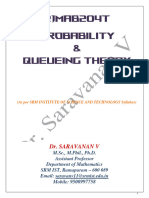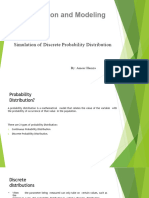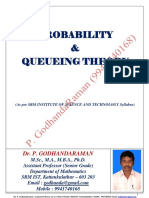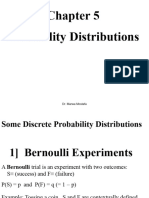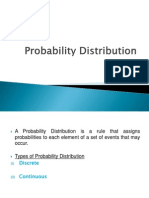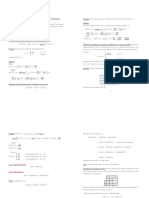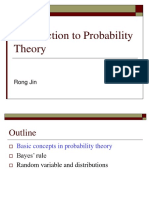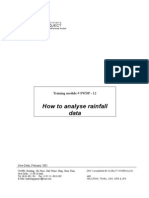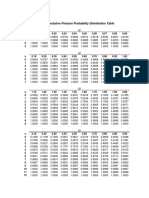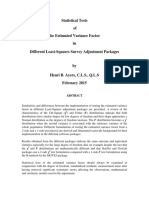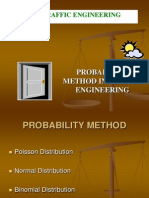0% found this document useful (0 votes)
12 views22 pagesModule 1 Topic 2
The document provides an overview of the Binomial Distribution, which models the number of successes in a fixed number of independent Bernoulli trials characterized by parameters n (number of trials) and p (probability of success). It details the probability mass function, properties, and formulas for mean, variance, and standard deviation, along with applications in AI and data science. Additionally, the document includes several problems and solutions illustrating the calculation of probabilities using the Binomial Distribution.
Uploaded by
aayushrasaily04Copyright
© © All Rights Reserved
We take content rights seriously. If you suspect this is your content, claim it here.
Available Formats
Download as PDF, TXT or read online on Scribd
0% found this document useful (0 votes)
12 views22 pagesModule 1 Topic 2
The document provides an overview of the Binomial Distribution, which models the number of successes in a fixed number of independent Bernoulli trials characterized by parameters n (number of trials) and p (probability of success). It details the probability mass function, properties, and formulas for mean, variance, and standard deviation, along with applications in AI and data science. Additionally, the document includes several problems and solutions illustrating the calculation of probabilities using the Binomial Distribution.
Uploaded by
aayushrasaily04Copyright
© © All Rights Reserved
We take content rights seriously. If you suspect this is your content, claim it here.
Available Formats
Download as PDF, TXT or read online on Scribd
/ 22




